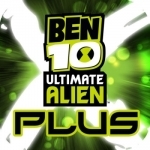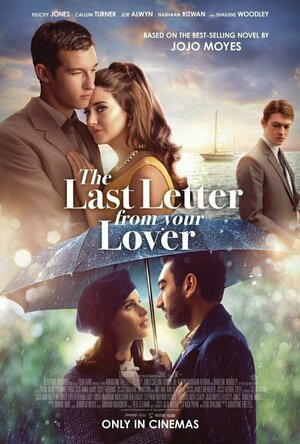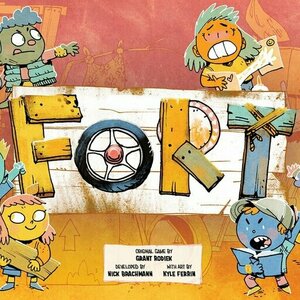
Deluxe Moon Pro - Moon Phases Calendar
Weather and Education
App
Deluxe Moon Pro is the best Moon app available in AppStore. Instead of paying $7.99 get Deluxe Moon...

Ben 10 Ultimate Alien: Xenodrome Plus
Games and Entertainment
App
It’s Hero Time! Test your skills and reflexes in this action-packed turn-based fighting game with...

Sounds: The Pronunciation App
Education and Reference
App
The ultimate interactive English pronunciation tool, for both students AND teachers. Sounds helps...
Purple Phoenix Games (2266 KP) rated Tumble Town in Tabletop Games
Mar 5, 2020
Tumble Town is dice rolling, structure building, drafting game with variable player powers. You are charged with choosing building plans to be added to Main Street of Tumble Town. You do this throughout the game by selecting the plans that will make best use of the resources (dice) you gain. The buildings that you construct may allow you special powers to be used on future turns, or one-time bonuses to be used once built. The player who can turn the greatest profit (in terms of VP) at the end of the game will be the winner!
DISCLAIMER: We were provided a prototype copy of this game for the purposes of this review. These are preview copy components, and the final components will definitely be different from these shown. Also, it is not my intention to detail every rule in the game, as there are just too many. You are invited to back the game through the Kickstarter campaign, from your FLGS, or through any other retailers stocking it after fulfillment. -T
To setup, deal each player a packet of starting components: a unique Horse card, two reference cards, Storehouse card, Main Street card, and two brown (they are red in the prototype) dice to be rolled and placed within the Storehouse. Shuffle and display the 1-, 2-, and 3-cactus building cards per the rulebook instructions to form the market. Set aside a number of each die type per the rulebook (both the building cards and dice are determined by number of players). Determine the first player and give them the first player token (a colorful rubber potted cactus). Players will connect their two Main Street cards at the central icon to create a two-card street (we chose the wagon wheel – Easy) and the game can begin!
Turns in Tumble Town consist of four mini-phases that flow into each other rather naturally. The first phase will have the players choosing a revealed building plan card from the offer market. The face-down draw stack will inform the active player as to how many and which type of dice they must draw and roll. Once they have these dice in their Storehouse, the player may now build plans using the dice they control. Buildings can be constructed and placed right onto Main Street, or be placed on the plan card to be placed on Main Street on a later turn. If the player has collected more dice than their Storehouse can hold, they must discard any of the dice they wish. This concludes a turn and the next player can begin their turn.
Certain iconography on the building plan cards allow players to use special powers throughout the game once built, and there are three types. Cards with the silvery bottom panel of symbols and the 1x notation are powers that must be used only once and only when the building is constructed. These powers could be collecting a die of the player’s choice, or receiving various dice counters. The building plan cards that feature a circular arrow notation are powers that can be used once per turn, every turn, if wished. These powers are found on each player’s Horse as well and can be adjusting a die’s face value, or re-rolling two dice, as examples. The third type of power is from the golden paneled cards that have an arrow pointing to a vertical line. These powers are only activated at the end of the game and mostly include scoring variances, like 1VP for each building a player has constructed that has a vulture icon (or a windmill, for example) featured on the card art.
Once a building is erected, the player may choose to place it onto their Main Street cards. When they place them, the player will need to choose where on Main Street these buildings should live. Like Bob Ross always says, “There are no mistakes, just happy accidents.” A player can place their buildings anywhere they wish on Main Street, but the Main Street cards will give extra bonuses to those players who plan ahead and place their buildings strategically. Some plots will ask for a building of a specific height (one die high or three dice high). Some will ask for the base level of the structure to be made of a specific material/die color (brown wood, black coal, silver metal, and gold… gold). Extra points are awarded if one-die-width alleyways are allotted, and these Main Street placements can score a bunch of endgame points.
Turns can be very quick or very deliberate, depending on the types of players involved. AP-prone players will take longer on their turns as they internalize all possibilities of their rolled results, while people like me just fly by the seats of our breeches. The game continues in this fashion: four mini-phases of drafting cards from the market, grabbing the associated dice, rolling them, and attempting to erect the best buildings on Main Street until two dice pools contain two or fewer dice. The current turn order finishes and the game is over.
Components. Again, this is a prototype copy of the game, and the publisher was decent enough to include a listing of items to be improved in the final version (like the red dice being poured brown in final – that really messed up someone’s strategy during a play-through for us because they kept forgetting that red is actually brown). The overall art style is very simplistic and I do NOT mean that negatively. The graphics and artwork are great, and give exactly what is needed without being so distracting that you cannot concentrate on your strategy. The dice are normal dice quality (that always seem to roll poorly when I’m rolling… hmm…). Once you see the photos of how the game will look during production, you will appreciate how great this is going to look on the table. No problems with components at all, save for the red vs. brown debacle that happened on our table. I really hope they keep the awwwwesome rubber cactus first player marker because it’s amazing.
I absolutely loved this one. I have always enjoyed using items for purposes other than originally intended – in this case, using dice as building materials. Of course, playing any game with dice introduces a bit of luck and instability in strategy, but Tumble Town offers quite a bit of manipulation of dice rolls that keeps almost all dice results feasible and useful. I really enjoyed the stacking, the quick turns, and the desperation when someone takes the last wood die when I was gunning for a wood-based building on my next turn. This game is light, but is chocked full of difficult decisions and luck of the roll. Tumble Town is for people who enjoy the rolling and stacking from FUSE (minus the frenzy), and the spatial building placement chaining of Villages of Valeria.
If this is the game for you, then we highly encourage you to check out the Kickstarter campaign which is running until Thursday, March 26. Tumble Town has already exceeding the funding goal at time of this review, but all future pledges will contribute to stretch goals that will improve components and add other components (spoiler?). So get out there and build up Tumble Town, ya yella-bellied greenhorns!
Bob Mann (459 KP) rated The Last Letter from Your Lover (2021) in Movies
Aug 9, 2021
Positives:
- "They don't make them like this any more" the saying goes. This is a love story cum melodrama that is well told by director Augustine Frizzell, in only her second feature. The film zips backwards and forwards between different time periods, trusting the audience to keep up with where we are. The dialogue is suitably soupy for a film of this type, based on a Jojo Moyes book (who wrote "Me Before You", also well-filmed). I've seen a critic review in "The Times" where they mocked the sentimentality of the love letters: but part of me would love to say "OK - let's hear what you would have written"!
- The story ticks all the boxes to keep you engaged. Although never moved to tears, a scene towards the end of the movie certainly generated a lump in the throat.
- All the leads are great. Shailene Woodley has been a personal favourite actress since her amazing turn in "The Descendants". And she certainly doesn't disappoint here.
- The production design is lush, particularly with the 60's scenes of London and the Riviera (reminiscent for me of the recent remake of "Rebecca"). This is nicely brought out by the cinematography (by George Steel), with some of the scenes being 'hang on the wall' beautiful to look at.
- It's wonderful to see the late Ben Cross in the movie, and he gives an excellent and touching performance. Cross died of cancer in August 2020 at the age of just 72. This is probably not his last movie, since he was in another - "The Devil's Light" - currently in post-production. Such a sad loss to the industry.
Negatives:
- The movie tries to construct a love story in the 60's and one in the present day 2020's, contrasting the different rules and values at play. The 60's one works; the 20's one really didn't for me. Ellie comes across as a very unlikeable person. The contrast between the lack of communications in the 60's (waiting at a station, not sure if someone will turn up or not) and today's chat/SMS rich 'always on' world could perhaps have been brought out more. With my Dr Bob directorial hat on, I would have ditched the present-day love story entirely and focused in on two professional detectives uncovering the past together: not everything needs to involve love and sex.
- The film has a couple of rain sequences that are highly unconvincing. One Riviera in-car scene particularly made me chuckle. "TURN FIRE HOSE ON!" You can almost see the blue sky and people cavorting on the beach behind them!
Summary Thoughts on "The Last Letter from Your Lover": There are actually few films around these days that feature love stories outside the teenage years. This is an 'old-fashioned' film that will appeal to an older age group, looking for style, romance and escapism. It reminded me in turns of movies like "The Two Faces of January" and "The Age of Adeline" in its mood and presentation. I'm probably not the target audience for this movie and I really enjoyed it. But the illustrious Mrs Movie Man probably is. And she declared that she absolutely loved it!
Ignore the sniffy newspaper and ex-newspaper critics. I'd declare this to be a "recommended".
(For the full graphical review, please check out One Mann's Movies on the web, Facebook or Tiktok. Thanks.)
Purple Phoenix Games (2266 KP) rated Fort in Tabletop Games
Jul 27, 2021
Fort is a hand management, deck-building game with a follow mechanic for two to four players. In it, players are assuming the roles of everyday kids trying to build their forts, play with their toys, and eat pizza with their buddies. The winner of the game is they who is able to score the most victory points (VP) at the end of the game, which can end in one of three different fashions.
DISCLAIMER: We were provided a copy of this game for the purposes of this review. This is a retail copy of the game, so what you see in these photos is exactly what would be received in your box. I do not intend to cover every single rule included in the rulebook, but will describe the overall game flow and major rule set so that our readers may get a sense of how the game plays. For more in depth rules, you may purchase a copy online or from your FLGS. -T
To setup, each player chooses a player color and takes all items belonging to them, including the Best Friends cards from the stack. Every other component is then separated by type and cards shuffled. Per the rules, some decks of cards will only have a certain amount on the table, whereas the main deck of kid cards is always used. Each player will draw eight kid cards from the deck to add to their Best Friends and shuffle them. They will also place their score markers on the 0 space of the Victory Track board. Randomly determine the starting player and give them the coveted First Player card, and the game may now begin!
Fort is played in turns, with each turn consisting of five phases (the first phase is skipped on the first turn). The first phase is Cleanup. To Cleanup, the active player takes all kid cards remaining in their Yard and places them in their own discard pile. Next, the active player will Play a kid card from their hand. On each card is a space for up to two actions to be taken: the public action on top and the private action on bottom. The player may complete both, but MUST complete at least one of the actions in its entirety. If using the public action of the card, then other players at the table may also follow the action by discarding one card of the matching suit of the card originally played. However, the leader (active player) may also play additional cards from their hand, of the same suit, in order to boost the effects of the actions. Followers may not. These actions include gaining “stuff” (pizza and toys) to be placed in their Stuff area or backpack, trashing cards in their hands, or gaining VP.
After the players have Played cards, the next phase is Recruit. The active player may choose any kid card that exists in the Park (the space underneath the Victory Track that is always full of kids), another player’s Yard (the space above the player’s main board that they neglected to play with their previous turn), or they may simply draw a kid card blindly from the Park deck. These kids are sent directly to the discard pile to be drawn on a later turn.
Finally, phases four and five end a player’s turn. Phase four is Discard, where the active player will discard all their Best Friends, kid cards they played this turn, and recruited kids. The kid cards leftover that were not used are sent to the player’s Yard above their main boards to possibly be stolen by another player during their Recruit phase. After Discarding, the final phase is Draw, where the active player will draw another hand of five cards to prepare to follow other players and to prepare for the next round. Fort continues in this fashion of each player taking turns and following others’ actions until one player earns 25 VP on the track, any player increases their Fort to level 5, or the Park deck becomes empty. All players will finish their turns so that they all have played an equal amount of turns, and then the players total their scores to crown the winner!
Components. This game has super great components. The little pizza and toys bits are awesome, the double-layered boards are cool, and the art is amazing as well. If it looks familiar in style, it’s because you have seen this art on Root, Oath, and Vast, among others. I love it so much and it is a perfect match for this theme. I really have little negative to say about Fort except that I wish the player colors were different. The orange and yellow are a little close in hue, and the brownish/olive is drab. Everything else, though, *chef’s kiss.
It is probably no surprise why I love this one. Deck-building has long been one of my favorite mechanics, and I have always enjoyed the follow mechanic found in Tiny Epic Galaxies and Villages of Valeria. Mix those up with much more going on and an excellent theme and it’s definitely a big time winner for me. I think what puts me over the edge here is that cards can be used for a couple different actions, and they can be boosted with the right strategies. Get your deck in order to really maximize each turn and the game opens up for you. Several times I have been able to focus my deck and really pound some powerful abilities, but it certainly doesn’t always work out for me, especially when others catch on to what I am doing and hate-draft me into other tactics.
If you are into a fresh new look at deck-building and enjoy more wacky themes, as I do, then I urge you to check out Fort. Officially, Purple Phoenix Games gives this one a playful 5 / 6, but even though it probably won’t break into my Top 10, I do think it will come to the table more often than most games in my Top 10. So should I reconsider my Top 10? Hmm. Anyway, Fort is awesome and everyone I have played with seem to agree with me. So grab a copy or two for yourself. Heck, the gift-giving season is fast approaching, and I know these fit very well under trees and other significant symbols of festivities…

WeVideo video & photo editor
Photo & Video and Business
App
WeVideo’s free video editor for iPhone and iPad is the easiest, fastest and most fun way to...

Jorte Calendar
Productivity and Utilities
App
With over 30 million downloads, Jorte is one of the most popular calendar/organizer applications....

Pacer: Pedometer & Walking App
Health & Fitness and Medical
App
Track your steps 24/7 using just your phone! Join a community of people just like you and get...

Blinkist - Always Learning
Education and Book
App
Where do the world’s smartest people get their ideas? From great books! Blinkist distills the key...


